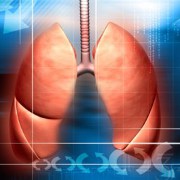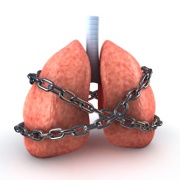 Photo: Getty Images
Photo: Getty Images
Tuberculosis is still a threat to residents of the United States, even though antibiotics have been available to treat it for many decades. Unlike HIV/AIDS and influenza, tuberculosis is caused by bacteria. The Centers for Disease Control and Prevention (CDC) has a Division of Tuberculosis Elimination that works with local health departments to control disease spread. Kiren Mitruka and colleagues at the CDC studied tuberculosis outbreaks in the United States, during the years 2002 to 2008.
Mitruka identified 27 tuberculosisoutbreaks that were extensive enough for local health departments to request assistance from the CDC. The total number of patients was 398. The study identified characteristics of individuals infected during these tuberculosis outbreaks:
1. U.S. birth. While foreign-born U.S. residents have a rate of tuberculosis 10 times that of native-born residents, the outbreaks were home grown. Thus, U.S.-born residents are more likely to infect others. A total of 91 percent of the patients in the 2 tuberculosis outbreaks were born in the United States.
2. African-American race. The majority of patients in these outbreaks, 67 percent, were non-Hispanic blacks.
3. Alcohol abuse. Alcohol has been previously documented as a risk for tuberculosis infection, and alcohol abuse was found in 51 percent of the patients in the CDC study.
4. Living conditions. Thirty-two percent of patients had a history of incarceration, and 20 percent were homeless.
5. HIV infection. At least 12 percent were infected with HIV. Mitruka noted that this is a mimimum estimate because complete testing data were not available.
6. Other. Substance abuse other than alcohol, immunosuppression other than HIV, diabetes, and male gender were minor factors associated with tuberculosis in this study.
Dr. Irene G. Sia and colleagues at the Mayo Clinic, Rochester, Minnesota, provided a review of the clinical aspects of tuberculosis. In adults, approximately 90 percent of cases start with latent infections which develop into active disease sometime later. Symptoms include fever, cough, weight loss, fatigue, and night sweats.
Tuberculosis can affect any organ system. The lungs are the most common site, but tuberculosis outside the lungs affects 15 percent of immunocompetent patients and 50 to 70 percent of patients with HIV.
In most cases, tuberculosis can be cured with antibiotics taken for approximately 6 to 12 months. Strains that are resistant to first-line drugs can be treated with second-line drugs that have more adverse effects and are less effective.
Sia concluded, “Efforts to eradicate it [tuberculosis] have been thwarted by poverty, lack of health care access, drug resistance, immunosuppressed populations (eg, HIV-infected persons), and global migration.”
References:
1. Mitrka K et al, “Tuberculosis outbreak investigations in the United States, 2002 – 2008”, Emerging Infectious Diseases 2011 March; 17(3): 425. http://www.ncbi.nlm.nih.gov/pubmed/21392433
2. Sia IG et al, “Current concepts in the management of tuberculosis”, Mayo Clinic Proceedings 2011 April; 86(4): 348-361. http://www.ncbi.nlm.nih.gov/pubmed/21454737
Linda Fugate is a scientist and writer in Austin, Texas. She has a Ph.D. in Physics and an M.S. in Macromolecular Science and Engineering. Her background includes academic and industrial research in materials science. She currently writes song lyrics and health articles.
Reviewed October 27, 2011
by Michele Blacksberg RN
Editd by Jody Smith




Add a CommentComments
There are no comments yet. Be the first one and get the conversation started!